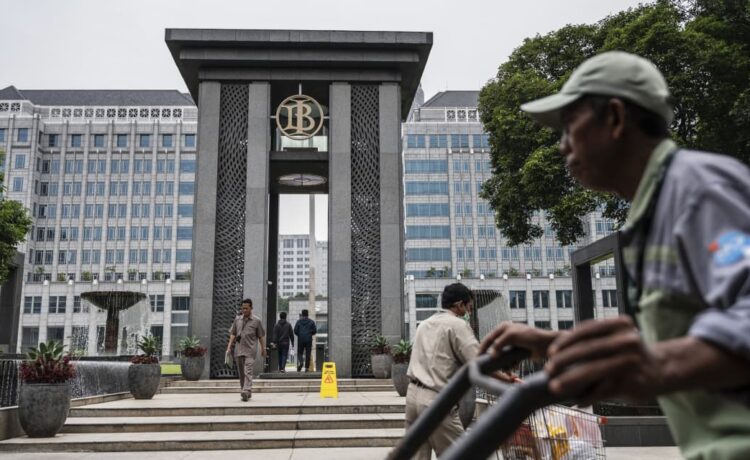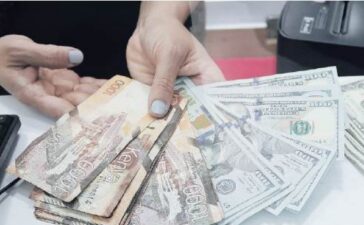About the author: William Pesek is a longtime Asia opinion writer, based in Tokyo. He is a former columnist for Barron’s and Bloomberg and the author of Japanization: What the World Can Learn from Japan’s Lost Decades.
Global markets rarely turn on interest rate decisions in Jakarta. But Bank Indonesia’s surprising tightening move last week is a terrible omen for investors from New York to Tokyo.
The Indonesian Central Bank’s quarter-point rate increase on April 24 wasn’t about events in Southeast Asia’s biggest economy, but those 10,000 miles away in Washington. A runaway dollar is wrestling capital away from emerging economies everywhere.
“These conditions,” Bank of Indonesia Gov. Perry Warjiyo told reporters, “require a strong policy response to mitigate the negative impact of global uncertainty on the economies of developing countries, including Indonesia.”
It’s but the latest example of the 1997-like vibes in Asia as the dollar surges. The rally has Indonesia once again scrambling to stabilize the rupiah, the Philippines and Thailand delaying rate cuts, South Korea’s central bank obsessing over won levels, China fretting worsening deflation, and the Japanese yen disappearing in real time.
Advertisement – Scroll to Continue
Déjà vu abounds. Malaysian Prime Minister Anwar Ibrahim, who was finance minister in the late 1990s, is having to reassure traders that the “concerning” ringgit exchange rate is “under control” as it tests 1998 lows. There’s little humor to be found in economists once again calling it the “shringgit.”
The subtext here is that episodes of extreme dollar strength don’t tend to end well for Asia. The most traumatic example is the 1997 Asian financial crisis, a reckoning precipitated by the same dynamic behind the dollar’s latest surge: aggressive Federal Reserve tightening.
Asia’s late-90s crash was a direct result of the Fed’s 1994-1995 tightening cycle, when policymakers doubled short-term interest rates in 12 months. Over time, as the dollar skyrocketed, currency pegs in Asia became impossible to defend.
Advertisement – Scroll to Continue
Thailand devalued first in July 1997, followed in short order by Indonesia and Korea. The Philippines found itself on the precipice of financial chaos. Malaysia, too, where officials resorted to capital controls.
Malaysia’s troubles have a way of triggering investors’ past trauma. It provided one of the late 90s era oddest story lines: then-Prime Minister Mahathir Mohamad clashing with George Soros. Mahathir called Soros a “moron,” convinced the hedge fund veteran was attacking the ringgit, as he did the British pound in 1992. Soros derided Mahathir as a “menace” to his economy.
That Anwar today is also being tripped up by a ringgit under speculative attack demonstrates how the ghosts of 1997 are trolling Asia’s present.
Advertisement – Scroll to Continue
Echoes of that period are also impossible to miss as the Japanese yen tests 160 to the dollar, the lowest since the 90s. The yen rapidly reversed its losses Monday, prompting speculation that Japanese officials had intervened in the market.
Meanwhile, worries are growing that China might enter the race to the bottom in currency markets.
After all, if you’re Chinese President Xi Jinping and battling deflation, why wouldn’t you pivot to a more advantageous exchange rate? Particularly as the beggar-thy-neighbor ways of U.S. ally Japan provide political cover.
Advertisement – Scroll to Continue
That would trigger a currency war on a scale that markets have never seen before. But even if Beijing opts to prop up the yuan, Asia’s year may be going off the rails in ways beyond anything it’s experienced since the 1990s.
This includes the 2008 Lehman Brothers reckoning. Asia avoided the worst of the global financial crisis because its two main economic engines stood their ground. Demand from China and Japan helped Asia navigate around Wall Street’s mess.
Neither engine is in peak service today. For all China’s claims it’s growing 5%, things under the hood are deeply troubling. The vital property sector remains in turmoil. Youth unemployment is at record highs. China is grappling with falling consumer prices and, as a result, chatter about a Japan-like funk.
The Fed’s reluctance to cut rates is complicating China’s debt management options. Any plans the People’s Bank of China had to cut rates are delayed until Fed Chair Jerome Powell’s team makes its move. While the “higher for longer” era for U.S. Treasury yields stretches on, Beijing will find it harder to maintain financial calm and prop up growth.
The calculus is equally difficult at
Advertisement – Scroll to Continue
headquarters here in Tokyo. As 2024 began, traders were just as convinced the BOJ would be tightening as they were that the Fed would be easing. The Fed’s about-face, and the dollar’s stubborn strength, has Gov. Kazuo Ueda’s BOJ in a state of policy paralysis.
Adding to Ueda’s challenge, Japanese inflation is trending lower. In 2023, the highest price pressures since the early 1980s justified an end to quantitative easing. In April, though, Tokyo region consumer prices rose just 1.6% year on year, below the BOJ’s 2% target.
From Japan to Thailand, the feedback effects of falling Chinese prices are altering economic trajectories.
There are other reasons why the global system is in a more precarious state than in the late 1990s. One is a deeply polarized U.S. political environment. This dysfunction is colliding with a national debt nearing $35 trillion in ways that already lost Washington two of its three AAA credit ratings.
Another: the long Covid effects undermining Asia’s outlook. These include huge public debts amassed to stabilize growth. The Asian Development Bank estimates that between 2019 and 2021 alone, public debt in developing Asia jumped more than 8% of GDP on average, with some countries increasing by almost 50%.
The dollar’s growing magnetic force leaves the region less prepared to weather big capital outflows and bond and stock markets starved of liquidity. That means less capital to finance infrastructure and invest in technology, education and healthcare to build more innovative and productive futures.
There’s no doubt that Asia has come a long way in the quarter-century since the Asian financial crisis. Economies are more dynamic and transparent. Banks are stronger and markets more resilient. Private sectors play a bigger role in driving growth. Foreign-exchange reserves have been rebuilt.
But Asia is still too reliant on exports for comfort. And the appeal of its economies from Indonesia to Korea is little match for a turbocharged dollar hoovering up more and more global capital. If Asian policymakers haven’t buckled their seat belts yet, now is the time.
Guest commentaries like this one are written by authors outside the Barron’s newsroom. They reflect the perspective and opinions of the authors. Submit commentary proposals and other feedback to ideas@barrons.com.















